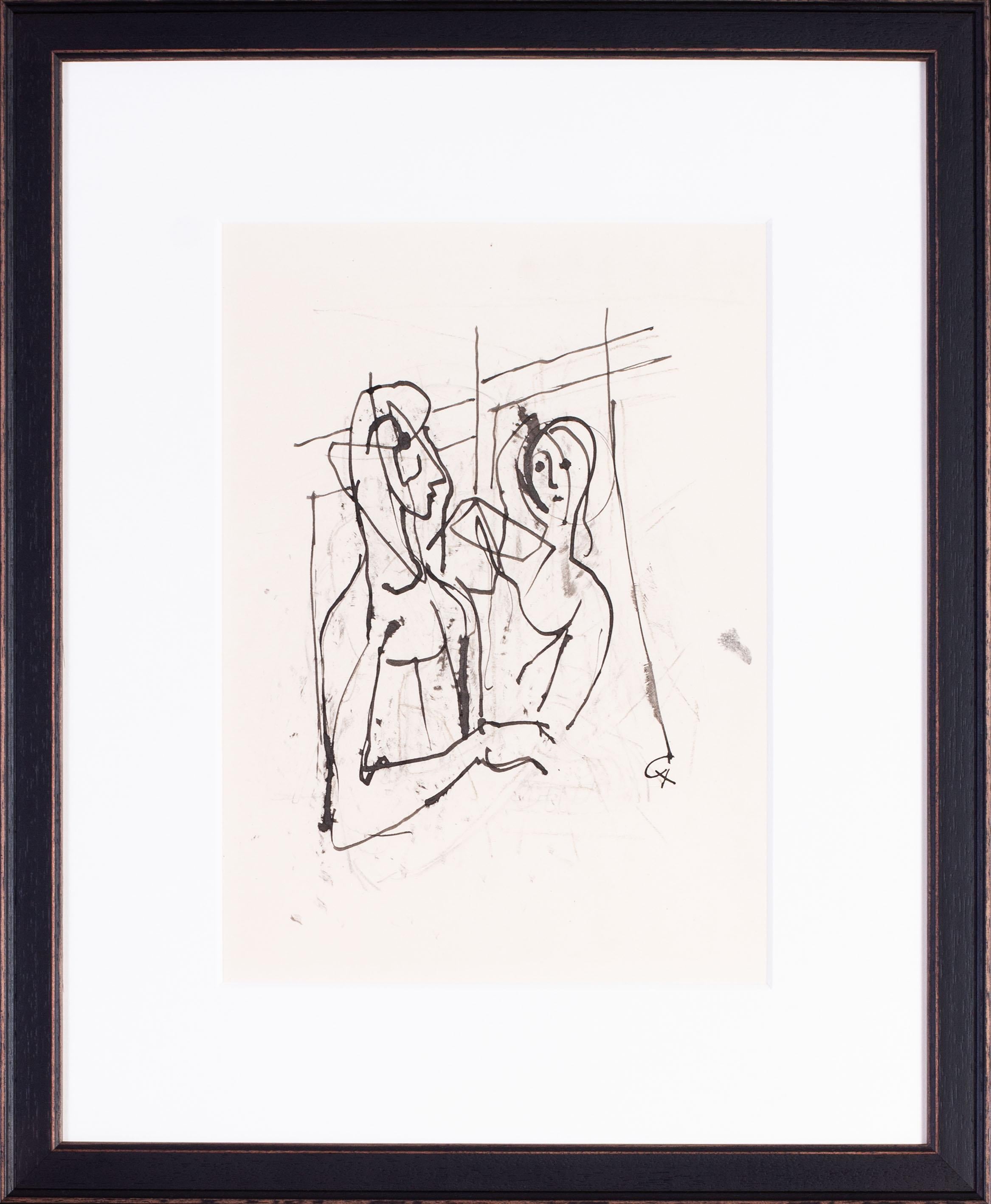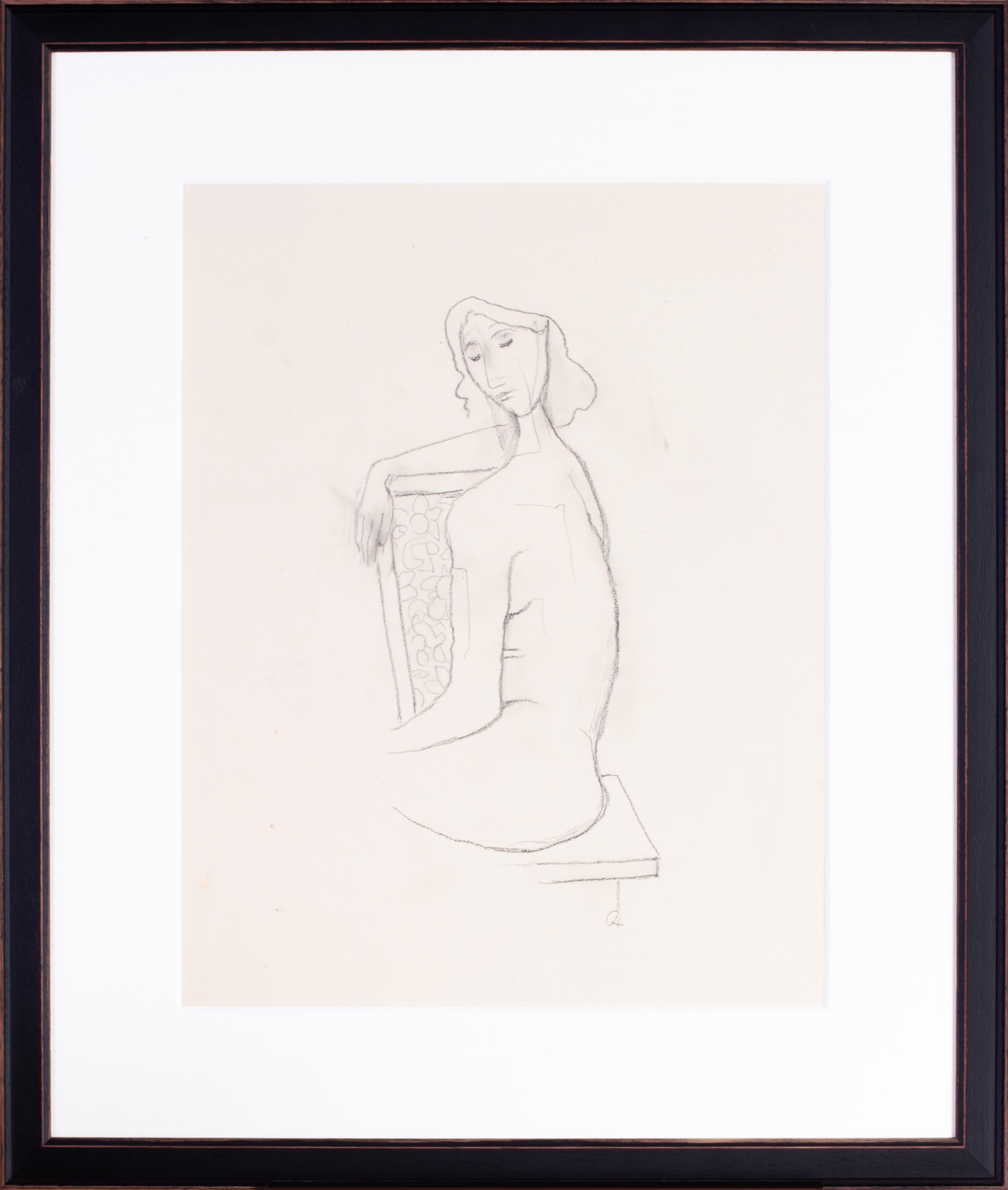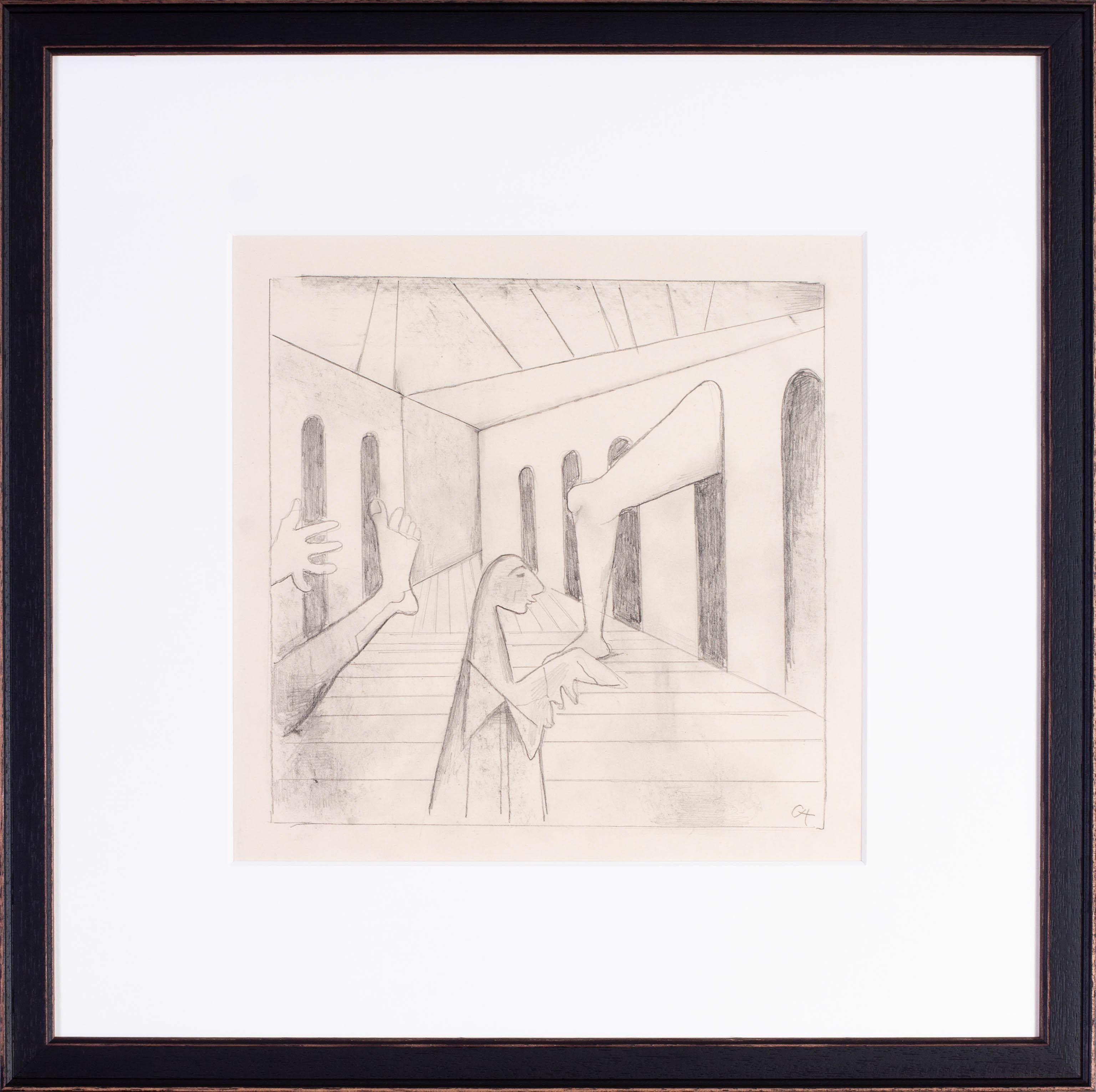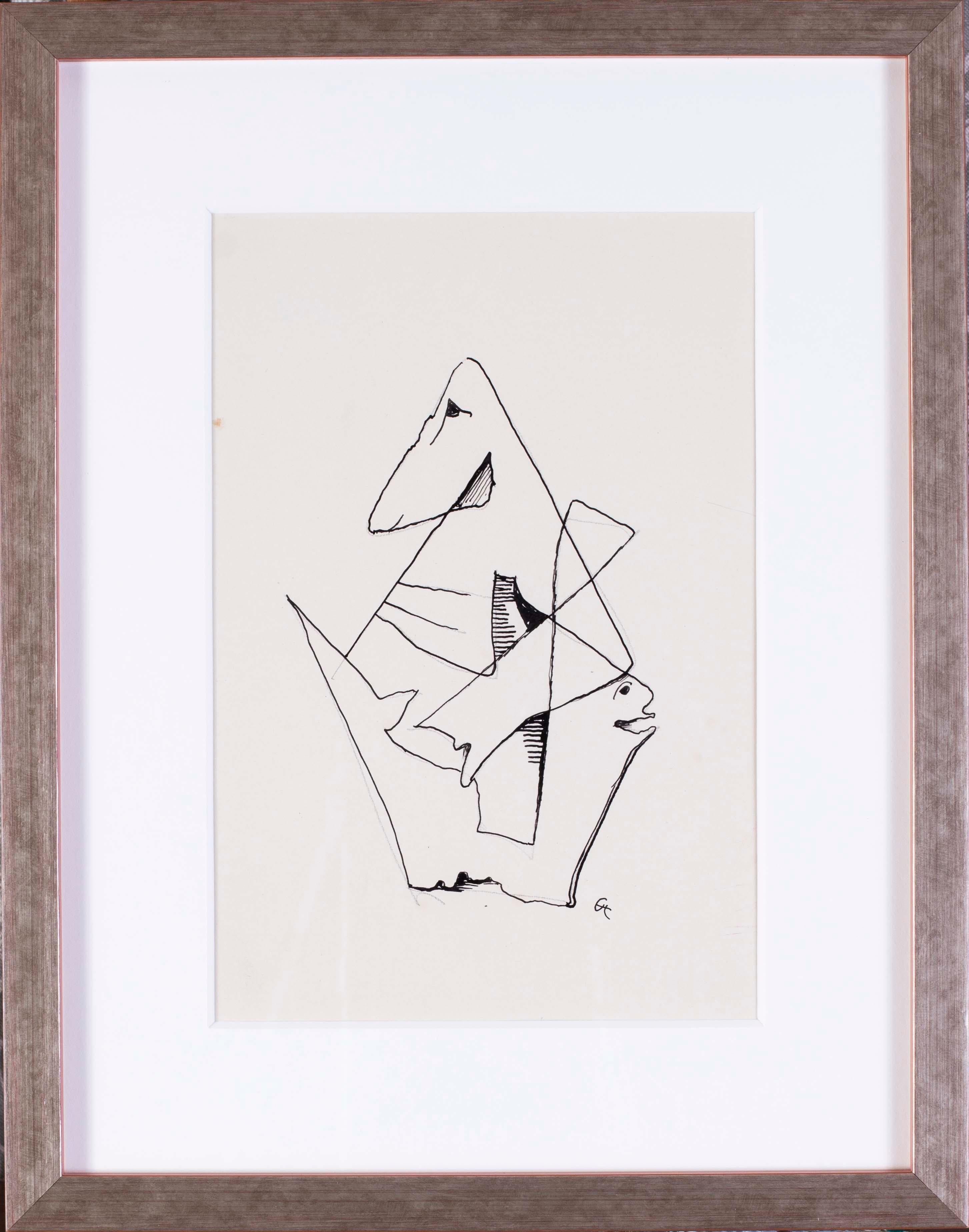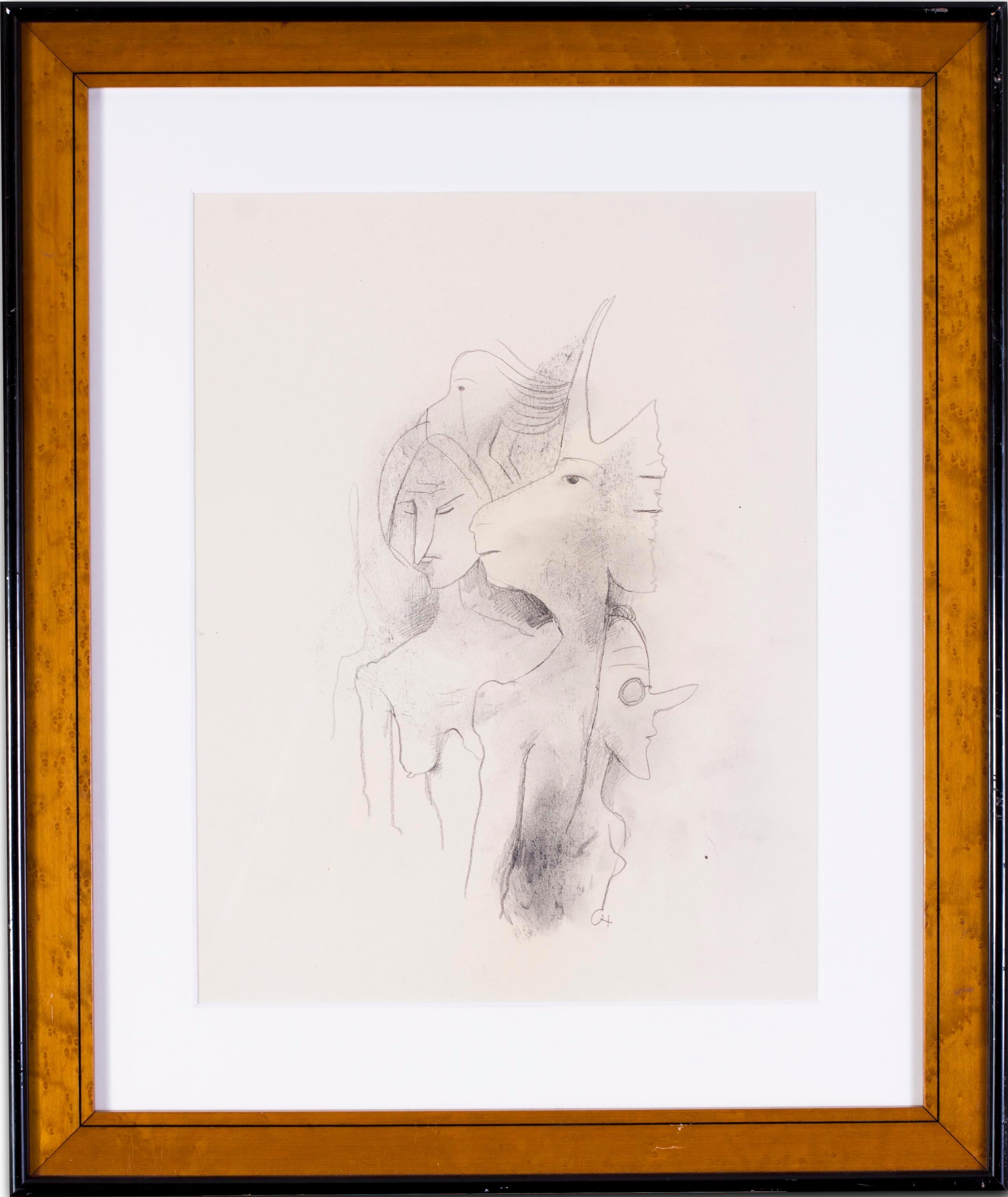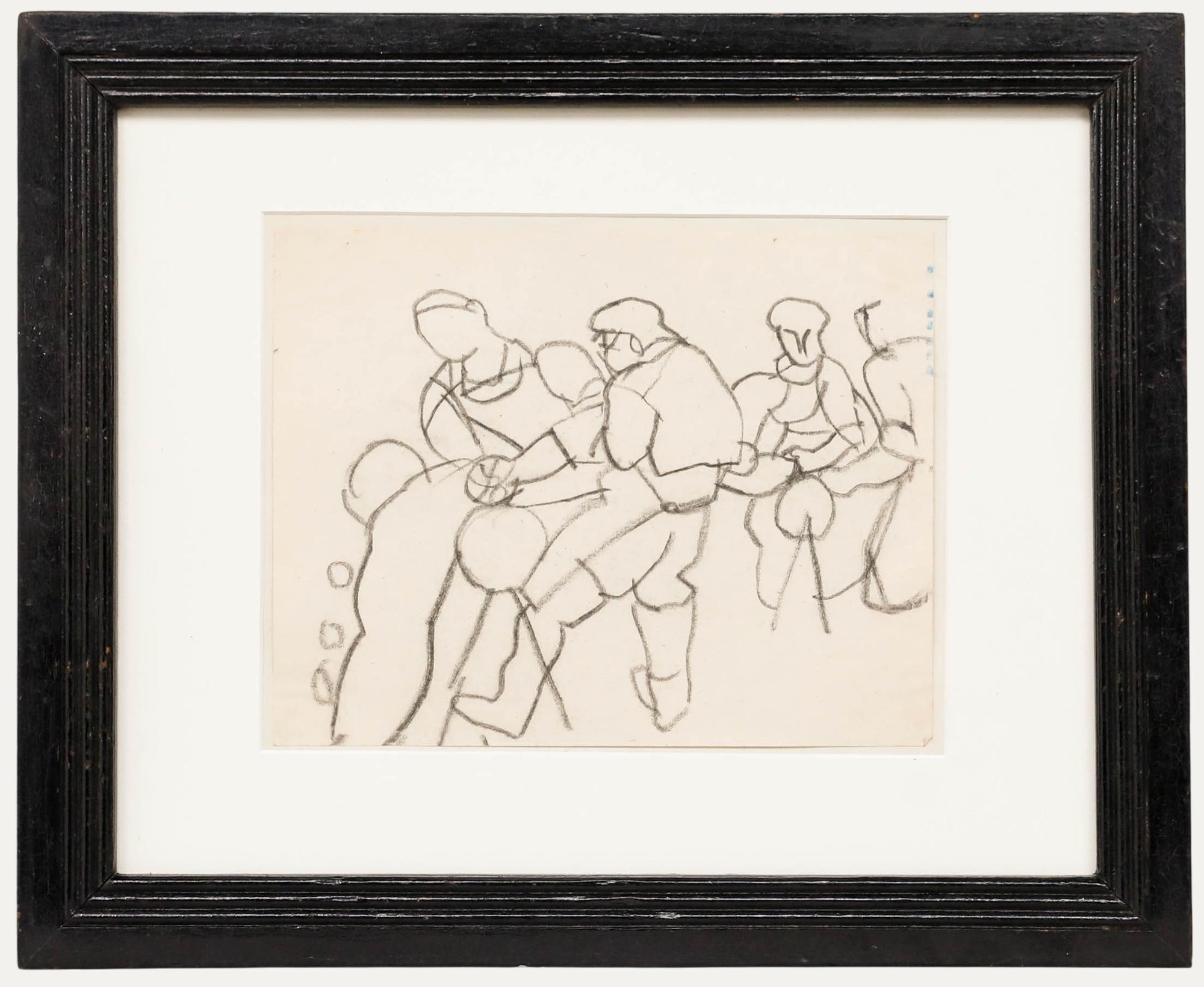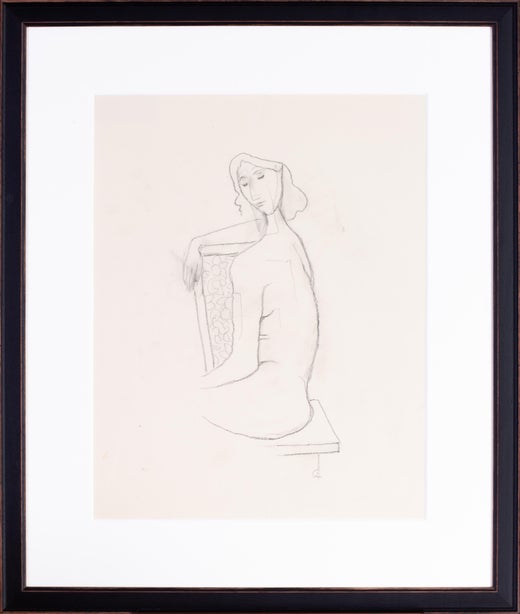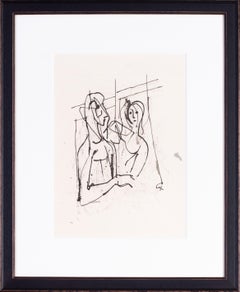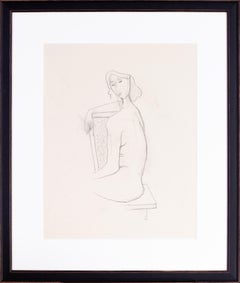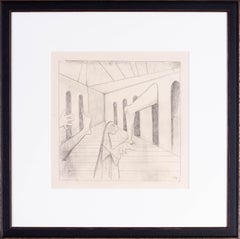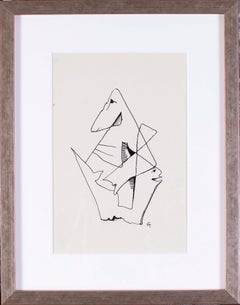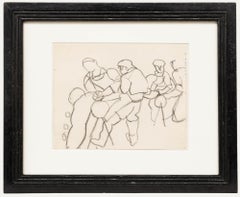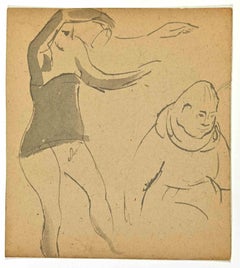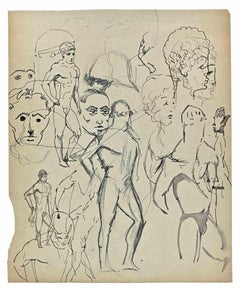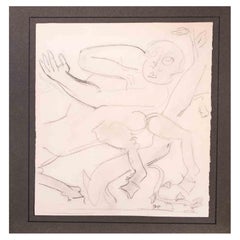Carl HoferGerman Expressionist drawing of abstracted figures by Carl Hofer
About the Item
- Creator:Carl Hofer (1878 - 1955, German)
- Dimensions:Height: 8.25 in (20.96 cm)Width: 9 in (22.86 cm)Depth: 1 in (2.54 cm)
- Medium:
- Movement & Style:
- Period:
- Condition:In good condition, recently reframed in a black wood frame with brown lines and a thick white mount behind glass.
- Gallery Location:Petworth, GB
- Reference Number:1stDibs: LU54037081482
Carl Hofer
Carl Hofer was born in Germany in 1875. He was a German expressionist painter and the director of the Berlin Academy of Fine Arts. One of the most important painters of the Expressionist movement, his work was among those that were considered degenerate art by the Nazis. He studied in Karlsruhe under Hans Thoma. He first visited Paris in 1899 making acquaintance with Julius Meier-Graefe. In 1902, he studied in Stuttgart and became friends with the sculptor Hermann Haller. His wife Mathilde Scheinberger was Jewish but later joined the Protestant faith. They traveled around Europe to Rome and Paris, where he was influenced by Paul Cezanne and Pablo Picasso. In 1908, he showed his work at the Berlin Succession founded by Max Liebermann. In 1913, he became a member of the New Freie Secession and was represented at its first exhibition in 1914 with Liebermann, Erich Heckel, Ernst, Ludwig, Kirchner, Max Pechstein and Karl Schmidt-Rottluff. After the first World War, he became a Professor at the College of Fine Arts in Charlottenburg. During the 20s, Hofer represented his style, which was later referred to as Magic Realism. After a love affair, Carl and Mathilde lived separately but remained married. With the rise of the Nazi party, he was fervently against the movement writing articles such as Fascism, the dark reaction, which was published by the Communist newspaper Welt am Abend. The Nazis claimed he was a Jew and defamed him on a poster in 1933 with Oskar Schlemmer. In the degenerate art exhibition in 1937, the Nazis represented 8 of his works as a propaganda exercise and in 1938 he was expelled from the Prussian Academy of Arts because of his marriage to Mathilde. He later divorced her but was still no longer allowed to sell his works. He married his lover Elizabeth Schmidt and the ban was lifted. Sadly his ex-wife was deported to Auschwitz and was killed in November 1942. After World War II, he regained his artistic prestige receiving awards and honorary doctorates and was very involved in the construction of the Berlin Academy of Fine Arts. Many of his works hang in modern art galleries and collections such as the Museum of Modern Art in New York, Kunsthalle Mannheim, Germany and Bavarian State Picture Collection, among many others. By the time of his death in 1955, he was considered one of the greatest living artists of his time.
- ShippingRetrieving quote...Shipping from: Petworth, United Kingdom
- Return Policy
More From This Seller
View All20th Century Expressionist Figurative Drawings and Watercolors
Paper, Crayon, Ink
20th Century Expressionist Figurative Drawings and Watercolors
Paper, Crayon
20th Century Expressionist Figurative Drawings and Watercolors
Paper, Pencil
Early 20th Century Expressionist Abstract Drawings and Watercolors
Paper, Ink, Pen, Pencil
20th Century Expressionist Figurative Drawings and Watercolors
Paper, Charcoal, Pencil
20th Century Expressionist Figurative Drawings and Watercolors
Paper, Crayon
You May Also Like
20th Century Abstract Drawings and Watercolors
Graphite
Mid-20th Century Modern Figurative Drawings and Watercolors
Watercolor
Mid-20th Century Modern Figurative Drawings and Watercolors
Pen, Ink, Pencil
Mid-20th Century Contemporary Figurative Drawings and Watercolors
Pencil
Mid-19th Century Modern Figurative Drawings and Watercolors
Pencil
Mid-20th Century Expressionist Drawings and Watercolor Paintings
Ink
